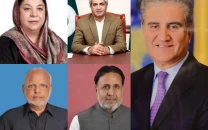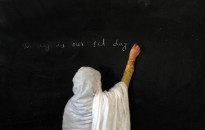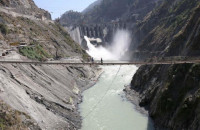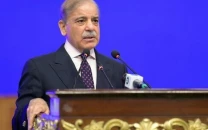Poverty incidence: Economist questions report findings
Islamabad is the city of the rich. Poverty incidence in many cities of Balochistan and K-P are over 90%

In K-P, In Torghar 92 per cent people were tagged as poor. Kohistan has 95.8 per cent poor population. PHOTO: REUTERS
The federal capital is followed by two provincial capitals — Lahore and Karachi — where the poverty ratio is 4.3 and 4.5 per cent, respectively.
Only half a dozen districts in the country fell within the single-digit poverty ratio category.
“The figures do not reflect the actual situation on the ground since the studies are relative,” Dr Kaiser Bengali, and independent economist says.
Statistics measured according to the multidimensional poverty index (MPI), show that Islamabad is the city of the rich, with only 3.1 per cent of its population categorised as poor.
However, Bengali says that if Islamabad was compared to world capitals, the situation might not look too encouraging.
“Capitals usually finish higher in such comparative studies because of better infrastructure and basic facilities,” he added.
MPI is based on the Alkire Foster Method, which covers three dimensions - education, health and living standards — as the yardstick with which to measure poverty, instead of traditional methods of merely relying on income or consumption.
Compiled with the help of the Oxford Poverty and Human Development Initiative (OPHI) and the United Nations Development Programme (UNDP), the report was released by the Planning Commission last month.
The year-wise figures cover the period from 2004 to 2015.
To tailor the measurement in Pakistan’s context, 15 indicators were used, instead of the usual 10 employed for the global assessment.
Within these 15 indicators, eight were used in the “living standards category”.
These include access to water, sanitation, walls, overcrowding, electricity, cooking fuel, assets, and land. Livestock indicator was specific to rural areas. The quality of education, years of schooling and school attendance rates were used to assess education.
The figures, according to Bengali, provide an overall picture of a district or a city and do not provide details of intra-city inequality in terms of distribution of resources.
While citing similar studies conducted by other institutes and organisations, the economist said that the very first such report was published by the Applied Economics Research Centre back in 1982.
Bengali said that since 1982 upper Punjab had usually ranked higher than the southern part of the province.
In Khyber-Pakhtunkhwa, Peshawar and Abbottabad districts usually finish better than other parts of the province, Bengali said.
Karachi has always fared better compared to Tharparkar and other districts of rural Sindh, he said.
In Balochistan, he added Quetta had always fared better than the rest of the province. The study revealed that 7.5 per cent of the population of Rawalpindi was categorised as poor.
Meanwhile, Jhelum’s poor accounted for 8.5 per cent of the population, Attock’s 9.9 per cent and Peshawar’s 31.5 per cent.
Balochistan houses Pakistan’s poorest of the poor. More than 90 per cent of the population of numerous districts lives below the poverty line in the province. In Quetta, 46.3 per cent people live in poverty.
The poorest districts are Kila Abdullah where 97 per cent fall below the poverty line, Harnai 94.2 per cent, Barkhan 93.6 per cent, and Sherani 90.6 per cent.
In K-P, In Torghar 92 per cent people were tagged as poor. Kohistan has 95.8 per cent poor population.
The findings show 60.6 per cent of the overall population does not have access to cooking fuel, 48.5 per cent do not complete schooling, almost four out of every 10 people (39 per cent) do not have any assets, over 38 per cent of the population live in shelters with one room, and one-thirds of the population do not have access to health facilities in the country.
Published in The Express Tribune, July 19th, 2016.



















COMMENTS
Comments are moderated and generally will be posted if they are on-topic and not abusive.
For more information, please see our Comments FAQ